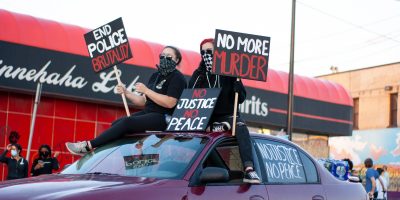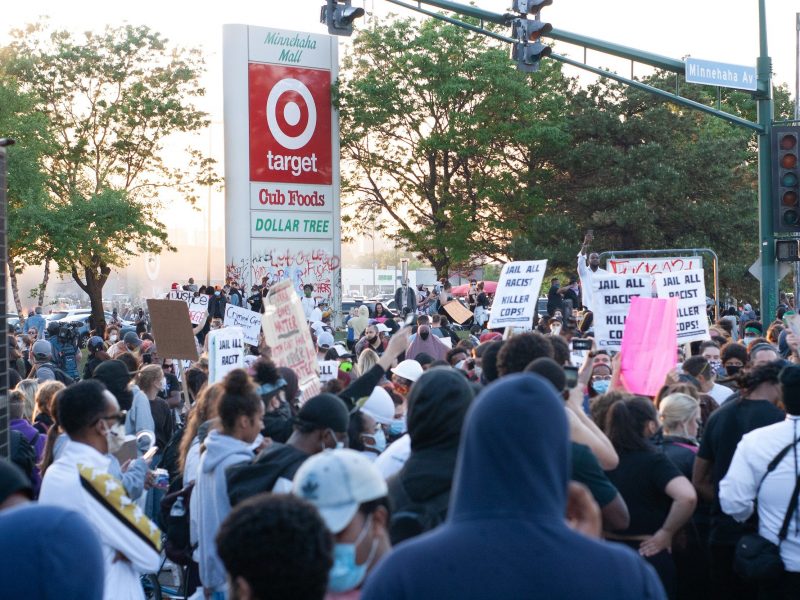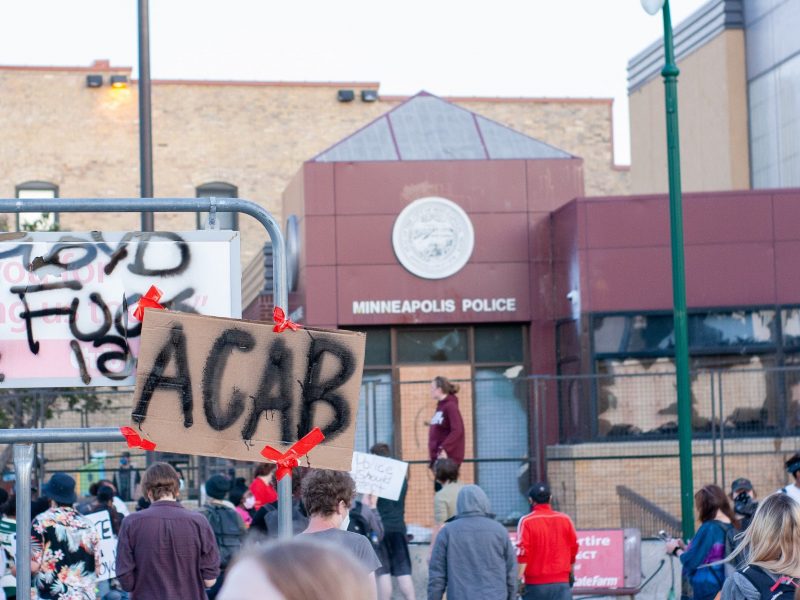
'The city has a knee on their neck': Protesters in Minneapolis told us why they showed up despite a pandemic and what they're doing to mitigate the threat of COVID-19
by Brianna Moné- Minneapolis protests escalated Thursday, while Minnesota remains under social distancing guidelines due to the COVID-19 pandemic.
- The protests erupted following the death of George Floyd, who died after a Minneapolis police officer knelt on his neck for more than five minutes.
- Protesters told us why they decided to show up despite the pandemic and how they tried to mitigate the risk of COVID-19.
- “Yesterday, I wanted to stay in, because I was like ‘I should quarantine,'” Sanjeev said. “But then I’m in my house, I can hear the rounds going off, the helicopters, you just go crazy hearing that in your neighborhood and not being there.”
- Visit Insider’s homepage for more stories.
Minneapolis protests escalated Thursday, while Minnesota remains under social distancing guidelines due to the COVID-19 pandemic.
The protests erupted following the death of George Floyd, who died after a Minneapolis police officer knelt on his neck for more than five minutes. Many protesters wore face masks during the unrest, but large swaths packed together in the turmoil near the police precinct closest to where Floyd died – the Third Precinct that protesters set fire to later in the night.
Various organizations and individuals organized to mitigate the threat of coronavirus. A church just blocks from the epicenter of the disruption was repurposed as a triage center for injured demonstrators and distributed hand sanitizer and masks.
Sam Pree-Gonzalez, executive project director for the Association for Black Economic Power, was present during the protest and said she already suffered with COVID-19 for seven weeks.
“While I don’t know whether I can still pass it to people or whatever, I personally don’t feel unsafe because I’m taking precautions,” she said.

Pree-Gonzalez has been part of a team of people distributing basic supplies throughout the protest, like food, water and clothes to change into. She said the team was running between different ad hoc medical stations to identify and fulfill needs.
“The city has a knee on their neck,” Pree-Gonzalez said. “Now the tables have turned, and COVID exposed a lot of disparities. This [death] has clearly exposed even further disparities.”
Her team will also be setting up stations throughout the city in the following days in areas where the protests haven’t yet reached, she said.
Sanjeev, a nearby resident who declined to share his last name for fear of job repercussions, said it has been impossible to maintain distance in the middle of the fray.
When he visited the intersection where Floyd was taken into police custody, which has become a memorial rather than a place of protest, he found that masks were handed out to whoever needed them.
He added that even though many of the protesters might be worried about the pandemic, the gathering signals how severe the crisis is in the city.
“Yesterday, I wanted to stay in, because I was like ‘I should quarantine,'” Sanjeev said. “But then I’m in my house, I can hear the rounds going off, the helicopters, you just go crazy hearing that in your neighborhood and not being there.”
Jewel Ferguson and Rebecca Jaja graduated from the nearby high school and hope the ongoing confrontation will get peoples’ attention. Jaja said she’s comforted that many people are wearing masks.

“I don’t think people who are at-risk or symptomatic would show up,” Jaja said. “I feel comfortable.”
Ferguson noted a comparison between the protests against the stay-at-home orders earlier this month, where many people arrived at the State Capitol with guns to demand lawmakers to open the state.
“People got to protest weeks ago because they couldn’t get a haircut,” Ferguson said. “And this is seen as violent when we can never bring back the lives that were lost.”
But she said it’s hard to say what progress for the city will look like due to the pandemic.
“We don’t even know like how everything will be after the coronavirus,” Ferguson said. “Everything is kind of up in the air.”